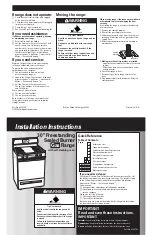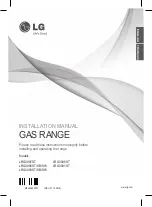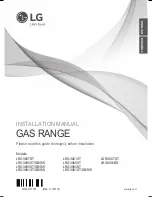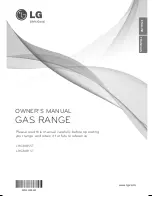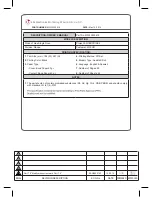
24.10.2007
Rev. 1.1
Operating instructions
13
4.3
After having used the appliance
4.3.1
Cleaning
Before cleaning, switch the appliance off and disconnect its power supply.
General information
The main causes for stainless steel wear or corrosion are:
•
using abrasive or acid detergents especially chlorine-based products, such as hy-
drochloric acid or sodium hypochlorite (bleach). Therefore, before buying a clean-
ing product, make sure it does not corrode stainless steel (also see paragraph
"Routine cleaning" below);
•
ferrous deposits (such as rust dissolved in the water through the pipe system, espe-
cially after a long time without being used), therefore have to be avoided; do not
use wire wool to remove stubborn food deposits. Use, instead, pads or spatulas
made of stainless steel or softer, non-ferrous materials;
•
Do not use abrasive steel wool pads to clean the ceramic-glass top; it could get
scratched.
•
stagnation of substances having acid components such as vinegar, lemon juice,
sauces, salt, etc. Avoid prolonged contact of the stainless steel parts of the appli-
ance with those substances. The evaporation of saline solutions over the appliance
surfaces is particularly harmful to them.
Routine cleaning
Cleaning the appliance thoroughly on a daily basis is the key to keeping it in perfect work-
ing condition and to prolong its life. Clean the appliance with a damp cloth using water
and soap or detergents, provided that they are not acid or abrasive as discussed above.
Such detergents should not even be used to wash the floor near the appliance, as their
fumes may deposit on the steel surfaces and damage them. If the appliance is very dirty,
use a Scotch-BriteTM type synthetic sponge. Rinse it well with clean water and wipe it
dry with a clean cloth. Do not rub the appliance with steel wool pads as they could leave
rust stains. For the same reason, avoid touching the appliance with ferrous objects.
Never use direct water jets to clean the appliance because this could result in water enter-
ing into it and damaging it.
Do not use abrasive steel wool pads to clean the ceramic-glass top; it could get scratched.
Stains and abrasions on the steel surface
Scratches and dark stains may be smoothed or removed using stainless steel wool pads or
synthetic abrasive sponges, which should always be rubbed in the same direction as the
satin finish.
Содержание 92/04 TVTC
Страница 2: ......
Страница 4: ...24 10 2007 Rev 1 1...
Страница 10: ...24 10 2007 Rev 1 1 Safety 4...
Страница 14: ...24 10 2007 Rev 1 1 Functional description 8...
Страница 22: ...24 10 2007 Rev 1 1 Operating instructions 16...
Страница 34: ...6SC00698 Wiring diagram 92 04VTCV TVTCV 3 N PE 400V 50 60 Hz...
Страница 36: ...6SC00697 Wiring diagram 94 04VTCV TVTCV 3 N PE 400V 50 60 Hz...
Страница 38: ...6SC00696 Wiring diagram 94 04VTCEV 3 N PE 400V 50 60 Hz...
Страница 46: ......
Страница 47: ......
Страница 48: ......









































